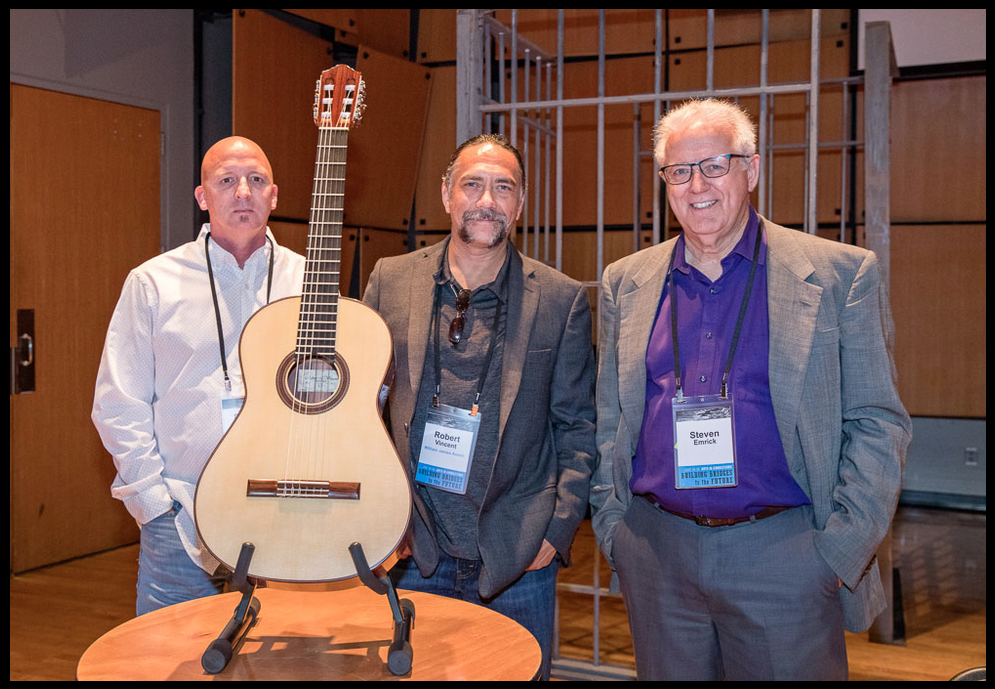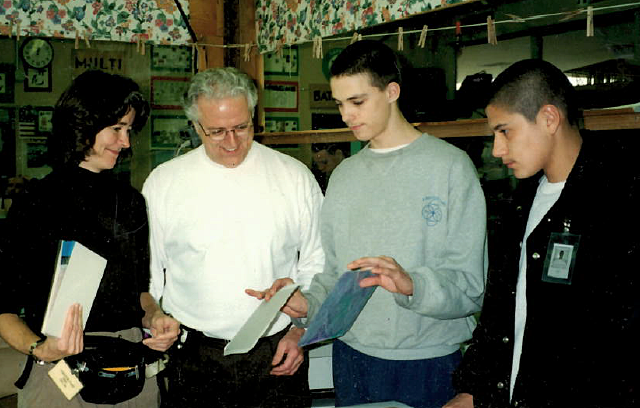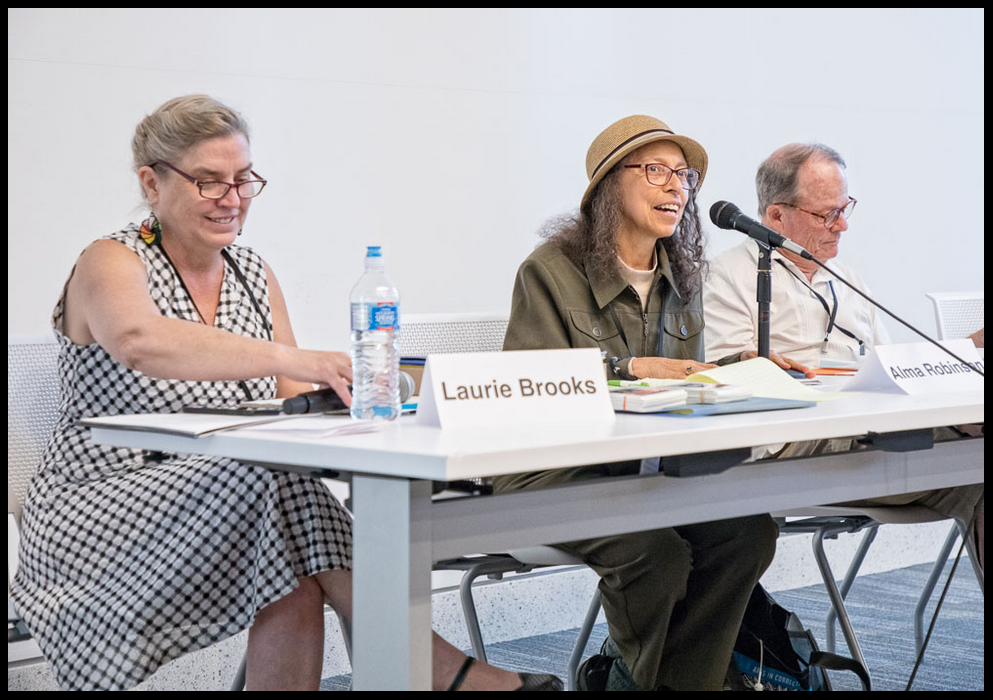In the third part of my interview with yoga teacher Charu Rachlis, she describes jettisoning promising careers in psychology and theater, discovering meditation, and reaching the decision to move to the U.S.
In Exile in My Own Country
S: Where did you go to college and what did you study?
C: I attended Universidade Gama Filho in Rio de Janeiro and majored in psychology.
S: What if anything do you feel you gained from that experience?
C: It expanded my horizons. I took classes in psychotherapy, philosophy, sociology, and anthropology. I’ve always liked to study subjects related to body-mind-spirit.
College graduation night. Charu is in bottom row, second from left.
S: Did you ever practice as a psychotherapist?
C: After I received my college degree, two friends and I started a career counseling service in Rio de Janeiro. We called it Orienta Servicos Psicologicos. We administered psych tests and used the results to help people choose professions. I did that for about 2-1/2 years. But given how young I was, I didn’t think I had enough life experience to be advising people. After a few years I broke down. I cried and cried and told my friends I liked providing a service but didn’t feel authentic doing it.
I dropped that. My family was upset with me for quitting. I ended up working in the television industry, like the rest of my family. I did production, scenery, casting. But it was a hard, depressing period. Eventually I quit that work too. I was kind of floating, which concerned my family.
My father had friends who worked for an insurance company that was half-public, half-private. It provided good benefits. He said, why don’t you take the placement test? I did, and I passed. I ended up working there for six years as a secretary. I earned a good income, so I was able to work part-time. At first I was taking acting classes in the evening. I attended the best acting school in Rio de Janeiro—and it was not cheap. It was a very rigorous program. If you studied there, you had to give it everything you had. I didn’t have enough time to study in the way that I wanted to without falling behind at work.
I stopped after two years. The teachers tried to convince me to stay. They said, You have real talent; you could be an actress. And I knew I was good at acting, but I also saw that I wasn’t willing to do whatever it took to keep studying. I decided I wasn’t meant to become an actress.
Looking back, though, I see that acting helped me later as a yoga teacher. Despite what you might think from seeing me teach, I’m quite shy, and all that improv, singing, and dancing taught me how to be in front of a group of people.
My secretarial job allowed me to pay the bills, but it didn’t satisfy me. A psychologist friend told me about a meditation course taught by a visiting Tibetan Buddhist from Berkeley’s Nyingma Institute. I was intrigued, because I’d always been fascinated by how we can transform ourselves and become more authentic. I took the course. I thought, this is everything—meditation, Tibetan yoga, lots of introspection.
After almost a year, I told my meditation teacher I wanted to keep studying. He said, We’re inviting people to study at the Nyingma Institute. It’s a work exchange; we offer room and board, and we’ll pay for half of your plane ticket. It’s a year-and-a-half commitment. I said, OK. A big doorway opened up for me in that moment. I didn’t quit my job at that stage but I took a leave of absence.
S: How did your family react to the idea of your going to live in the US?
C: Oh my gosh, it was a big drama. I had some Buddha statues in the apartment where I was living at that time, and my mom took them and threw them in the trash.
My dad had passed away by then. We had been close. We both loved books and reading, and he had always told me I was a dreamer. But aside from the pull of that relationship, even though I loved my family, I didn’t feel like I belonged in Brazil. I felt like an exile in my own country. If my dad had remained alive, I don’t know if I would have felt the freedom to leave everything behind like that and take on the world. But being invited to Berkeley so soon after his death felt like a sign that it was time to go.
Next: The Heart Is the Major Target—Part 4: Wow, This Is Me
-
August 2021
- Aug 31, 2021 The Heart Is the Major Target—Part 9: The Teacher Role Isn't My Essence Aug 31, 2021
-
June 2021
- Jun 13, 2021 The Heart Is the Major Target—Part 8: Machines Spilling Out Teachers Jun 13, 2021
-
April 2021
- Apr 14, 2021 The Heart Is the Major Target—Part 7: A Waterfall of Inspiration Apr 14, 2021
-
February 2021
- Feb 14, 2021 The Heart Is the Major Target—Part 6: Grab the Right Computer File Feb 14, 2021
-
December 2020
- Dec 26, 2020 The Heart Is the Major Target—Part 5: Yoga Is My Second Child Dec 26, 2020
-
November 2020
- Nov 5, 2020 The Heart Is the Major Target—Part 4: Wow, This Is Me Nov 5, 2020
-
October 2020
- Oct 4, 2020 The Heart Is the Major Target—Part 3: In Exile in My Own Country Oct 4, 2020
-
August 2020
- Aug 23, 2020 The Heart Is the Major Target—Part 2: Openness to the Unseen Aug 23, 2020
- Aug 2, 2020 The Heart Is the Major Target—Part 1: Let's Move Around; We'll Feel Better Aug 2, 2020
-
July 2020
- Jul 25, 2020 Educator Wellness Series Conclusion: Moving Forward with Wellness Jul 25, 2020
- Jul 6, 2020 Educator Wellness Practice #10: Inhabiting the Dignified Stance of "Adequate" Jul 6, 2020
-
June 2020
- Jun 17, 2020 Educator Wellness Practice #9: Jun 17, 2020
- Jun 3, 2020 Educator Wellness Practice #8: Reducing Stress Through Body Scanning Jun 3, 2020
-
May 2020
- May 21, 2020 Facebook Live Event: A Conversation About the Impact of Saying Goodbye to Students May 21, 2020
- May 13, 2020 Educator Wellness Practice #7: Setting Intention and Letting Go of Results May 13, 2020
- May 6, 2020 Educator Wellness Practice #6: Practicing Goodwill as Self-Care May 6, 2020
-
April 2020
- Apr 29, 2020 Educator Wellness Practice #5: Dealing with Constant Change Apr 29, 2020
- Apr 22, 2020 Educator Wellness Practice #4: Listening to Silence Apr 22, 2020
- Apr 21, 2020 Facebook Live Event: A Conversation About the Importance of Self-Care Apr 21, 2020
- Apr 15, 2020 Educator Wellness Practice #3: Apr 15, 2020
- Apr 8, 2020 Educator Wellness Practice #2: Engaging Wisely with News and Media Apr 8, 2020
- Apr 1, 2020 Educator Wellness Practice #1: Breathe ... Keep Breathing Apr 1, 2020
-
March 2020
- Mar 25, 2020 Educator Wellness Series for Collaborative Classroom Mar 25, 2020
-
May 2019
- May 19, 2019 Managing to Build Bridges - Part 8: Do We Want to Be Right in a Dictionary Sense? May 19, 2019
-
April 2019
- Apr 27, 2019 Managing to Build Bridges - Part 7: You Just Need to Find a Good Husband Apr 27, 2019
- Apr 6, 2019 Managing to Build Bridges - Part 6: Human Remains and Cultural Artifacts Apr 6, 2019
-
March 2019
- Mar 17, 2019 Managing to Build Bridges - Part 5: Poetry Has No Rules Mar 17, 2019
- Mar 3, 2019 Managing to Build Bridges - Part 4: Dessert Goes to a Different Stomach Mar 3, 2019
-
January 2019
- Jan 13, 2019 Managing to Build Bridges - Part 3: I Felt Pretty Stupid Jan 13, 2019
-
December 2018
- Dec 9, 2018 Managing to Build Bridges - Part 2: Such a Bad Kid Dec 9, 2018
-
November 2018
- Nov 23, 2018 Managing to Build Bridges - Part 1: The Pressure to Be a Certain Type of Girl Nov 23, 2018
-
October 2018
- Oct 23, 2018 Leadership Without Ego - Part 6: Mayberry with an Edge Oct 23, 2018
- Oct 1, 2018 Leadership Without Ego - Part 5: Everyone Everywhere Deserves to Make Art Oct 1, 2018
-
September 2018
- Sep 10, 2018 Leadership Without Ego - Part 4: I'm About Ready to Swear Sep 10, 2018
-
August 2018
- Aug 19, 2018 Leadership Without Ego - Part 3: The Dalai Lama Breaks All the Rules Aug 19, 2018
-
July 2018
- Jul 29, 2018 Leadership Without Ego - Part 2: The Kids Melted Under That Praise Jul 29, 2018
- Jul 10, 2018 Leadership Without Ego - Part 1: The Workshop Was Neutral Territory Jul 10, 2018
-
May 2018
- May 26, 2018 The Alchemy of Service - Part 5: Watch Out, Someone's Behind You May 26, 2018
- May 6, 2018 The Alchemy of Service - Part 4: Fireworks and Tears May 6, 2018
- May 5, 2018 The Alchemy of Service - Part 3: Joann Wong! You Are Chinese! May 5, 2018
-
April 2018
- Apr 6, 2018 The Alchemy of Service - Part 2: Mom, It's Only a Nickel Apr 6, 2018
-
March 2018
- Mar 19, 2018 The Alchemy of Service - Part 1: Mouse Soup Mar 19, 2018
-
February 2018
- Feb 18, 2018 Back to the Garden - Part 4: Mountain Lion Footprints on the Deck Feb 18, 2018
- Feb 3, 2018 Back to the Garden - Part 3: "You're a Good Egg—Happy Easter" Feb 3, 2018
-
January 2018
- Jan 15, 2018 Back to the Garden - Part 2: "A Pretty Big Failure" Jan 15, 2018
- Jan 1, 2018 Back to the Garden - Part 1: "Aesthetic Shock" Jan 1, 2018
-
August 2017
- Aug 15, 2017 Goodbye Self-esteem, Hello Self-compassion – Part 3: Real Love Aug 15, 2017
-
July 2017
- Jul 31, 2017 Goodbye Self-esteem, Hello Self-compassion – Part 2: Mirror, Mirror Jul 31, 2017
- Jul 17, 2017 Goodbye Self-esteem, Hello Self-compassion – Part 1: Bashing Vasco Jul 17, 2017
-
May 2017
- May 28, 2017 This Thing I Found: Teens Teach Us How to See Freshly May 28, 2017
-
March 2017
- Mar 20, 2017 Dream On - Part 6: Dream Analysis Example Mar 20, 2017
- Mar 7, 2017 Dream On - Part 5: A Dream Analysis Technique (cont.) Mar 7, 2017
-
February 2017
- Feb 20, 2017 Dream On - Part 4: A Dream Analysis Technique Feb 20, 2017
-
January 2017
- Jan 22, 2017 Dream On - Part 3: Recording Dreams Jan 22, 2017
- Jan 15, 2017 Dream On - Part 2: Dream Recall Jan 15, 2017
-
December 2016
- Dec 30, 2016 Dream On – Part 1 Dec 30, 2016
- Dec 12, 2016 Enjoying the Ride of Serendipity Dec 12, 2016
- Dec 6, 2016 Agnes Martin: A Singular Career Dec 6, 2016












